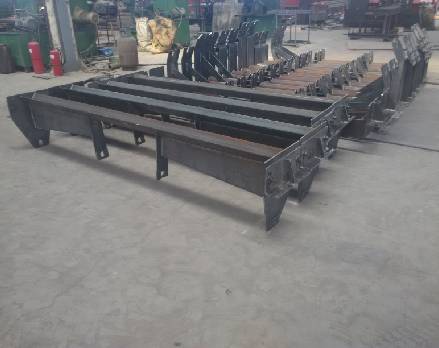 Afrikaans
Afrikaans  Albanian
Albanian  Amharic
Amharic  Arabic
Arabic  Armenian
Armenian  Azerbaijani
Azerbaijani  Basque
Basque  Belarusian
Belarusian  Bengali
Bengali  Bosnian
Bosnian  Bulgarian
Bulgarian  Catalan
Catalan  Cebuano
Cebuano  Corsican
Corsican  Croatian
Croatian  Czech
Czech  Danish
Danish  Dutch
Dutch  English
English  Esperanto
Esperanto  Estonian
Estonian  Finnish
Finnish  French
French  Frisian
Frisian  Galician
Galician  Georgian
Georgian  German
German  Greek
Greek  Gujarati
Gujarati  Haitian Creole
Haitian Creole  hausa
hausa  hawaiian
hawaiian  Hebrew
Hebrew  Hindi
Hindi  Miao
Miao  Hungarian
Hungarian  Icelandic
Icelandic  igbo
igbo  Indonesian
Indonesian  irish
irish  Italian
Italian  Japanese
Japanese  Javanese
Javanese  Kannada
Kannada  kazakh
kazakh  Khmer
Khmer  Rwandese
Rwandese  Korean
Korean  Kurdish
Kurdish  Kyrgyz
Kyrgyz  Lao
Lao  Latin
Latin  Latvian
Latvian  Lithuanian
Lithuanian  Luxembourgish
Luxembourgish  Macedonian
Macedonian  Malgashi
Malgashi  Malay
Malay  Malayalam
Malayalam  Maltese
Maltese  Maori
Maori  Marathi
Marathi  Mongolian
Mongolian  Myanmar
Myanmar  Nepali
Nepali  Norwegian
Norwegian  Norwegian
Norwegian  Occitan
Occitan  Pashto
Pashto  Persian
Persian  Polish
Polish  Portuguese
Portuguese  Punjabi
Punjabi  Romanian
Romanian  Russian
Russian  Samoan
Samoan  Scottish Gaelic
Scottish Gaelic  Serbian
Serbian  Sesotho
Sesotho  Shona
Shona  Sindhi
Sindhi  Sinhala
Sinhala  Slovak
Slovak  Slovenian
Slovenian  Somali
Somali  Spanish
Spanish  Sundanese
Sundanese  Swahili
Swahili  Swedish
Swedish  Tagalog
Tagalog  Tajik
Tajik  Tamil
Tamil  Tatar
Tatar  Telugu
Telugu  Thai
Thai  Turkish
Turkish  Turkmen
Turkmen  Ukrainian
Ukrainian  Urdu
Urdu  Uighur
Uighur  Uzbek
Uzbek  Vietnamese
Vietnamese  Welsh
Welsh  Bantu
Bantu  Yiddish
Yiddish  Yoruba
Yoruba  Zulu
Zulu Understanding the Importance of Non-Driven Pulleys in Mechanical Systems and Their Applications
Understanding Non-Drive Pulleys and Their Importance in Mechanical Systems
In mechanical engineering and machine design, pulleys play a crucial role in the transmission of power and motion. When discussing pulleys, we often hear terms like drive pulley and non-drive pulley. While drive pulleys are integral components that actively engage with a power source to drive a mechanism, non-drive pulleys serve a different but equally important function.
What is a Non-Drive Pulley?
A non-drive pulley, also known as a passive pulley, is designed to redirect or support the movement of a belt without receiving direct power input. Instead of being connected to a power source, non-drive pulleys primarily assist in guiding and controlling the direction of power transmission, often serving roles such as tensioning or changing the pathway of a belt system. These pulleys are often found in a variety of applications, including conveyors, elevators, and various machinery where belt systems are employed.
Functions of Non-Drive Pulleys
1. Direction Change One of the primary functions of a non-drive pulley is to change the direction of a belt. By repositioning the belt's pathway, non-drive pulleys help optimize space in machinery setups, enabling efficient layouts in manufacturing processes and equipment.
2. Support and Stability Non-drive pulleys can provide crucial support for the belt, ensuring that it remains taut and minimizing slippage. This stabilization is vital for maintaining efficiency and prolonging the lifespan of both the belts and the driving components.
non-drive pulley

3. Tension Management Non-drive pulleys are often used to adjust and maintain the tension of a belt. Proper tension is vital for efficient operation, as it prevents wear and tear, reduces energy loss, and ensures that power is effectively transmitted through the belt system.
4. Load Distribution In complex machinery, non-drive pulleys can help distribute the load more evenly across the system. By utilizing multiple non-drive pulleys, engineers can optimize performance and reduce the risk of mechanical failures due to uneven load distribution.
Applications of Non-Drive Pulleys
Non-drive pulleys are commonly found in a variety of industrial and mechanical settings. For example, in conveyor systems, the non-drive pulleys redirect the conveyor belt around corners and guide materials along the production line. In elevators, non-drive pulleys change the direction of steel cables that lift and lower the elevator cars.
Furthermore, non-drive pulleys are also employed in fitness equipment such as pulley systems in weight machines. Here, they allow for versatile movement patterns while managing the required tensions and directions for a smooth workout experience.
Conclusion
In summary, non-drive pulleys, though often overlooked, play a pivotal role in the efficiency and functionality of many mechanical systems. By facilitating direction changes, providing support, managing tension, and distributing loads, they contribute to the seamless operation of various machinery. As technology continues to advance, the design and application of non-drive pulleys will undoubtedly evolve, showcasing their importance in creating efficient, reliable, and high-performance systems. Understanding the nuances of non-drive pulleys is essential for engineers and designers as they work towards optimizing mechanical designs for industries ranging from manufacturing to fitness.
-
Revolutionizing Conveyor Reliability with Advanced Rubber Lagging PulleysNewsJul.22,2025
-
Powering Precision and Durability with Expert Manufacturers of Conveyor ComponentsNewsJul.22,2025
-
Optimizing Conveyor Systems with Advanced Conveyor AccessoriesNewsJul.22,2025
-
Maximize Conveyor Efficiency with Quality Conveyor Idler PulleysNewsJul.22,2025
-
Future-Proof Your Conveyor System with High-Performance Polyurethane RollerNewsJul.22,2025
-
Driving Efficiency Forward with Quality Idlers and RollersNewsJul.22,2025





























